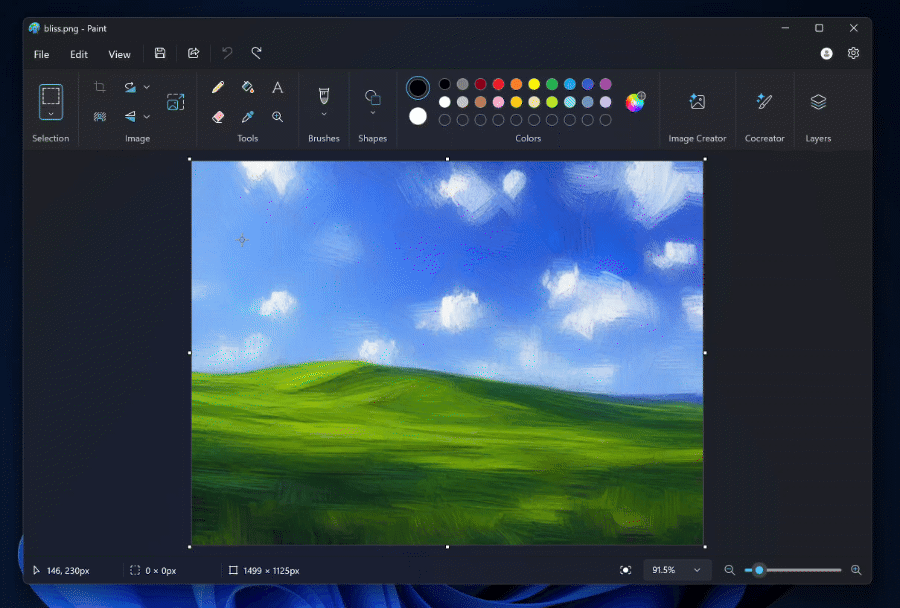
Your everyday Windows apps are going to get a whole lot smarter. As Microsoft mentions in its Windows Insiders Blog, using the Windows 11 Paint app will improve thanks to new AI features that the tech giant is adding to make it more helpful for users. It’s still in early testing, and there is no official information about when or if it’ll roll out to all users.
Switching tracks, the Paint app for Windows 11 is also getting a feature called generative fill that you can use to add an AI-generated element to an image. Microsoft uses the example of someone selecting the area to add an image with text in the prompt below. The castle is created and added to the image by simply clicking the Create button. If you don’t like the result, you can ask the AI to try again.
You can also use another helpful AI feature called generative erase, which lets you erase any undesirable elements in the background. You brush over the area of the object you want to erase, and the feature will do the rest. But there is a catch to the generative fill feature: It’s only going to be available on Copilot+ PCs with a Snapdragon CPU initially. This is bad news for Windows 11 users with a “normal” PC since the feature requires the PC to have a powerful NPU, which is a prerequisite.
Paint already had its first AI feature, Cocreator, launched earlier this year, which aligned with the deprecation of Paint 3D.
Of course, Microsoft is being cautious about the new features, especially in light of the whole saga around Recall. It said it will “monitor feedback and see how it lands” before it rolls them out to other users.



